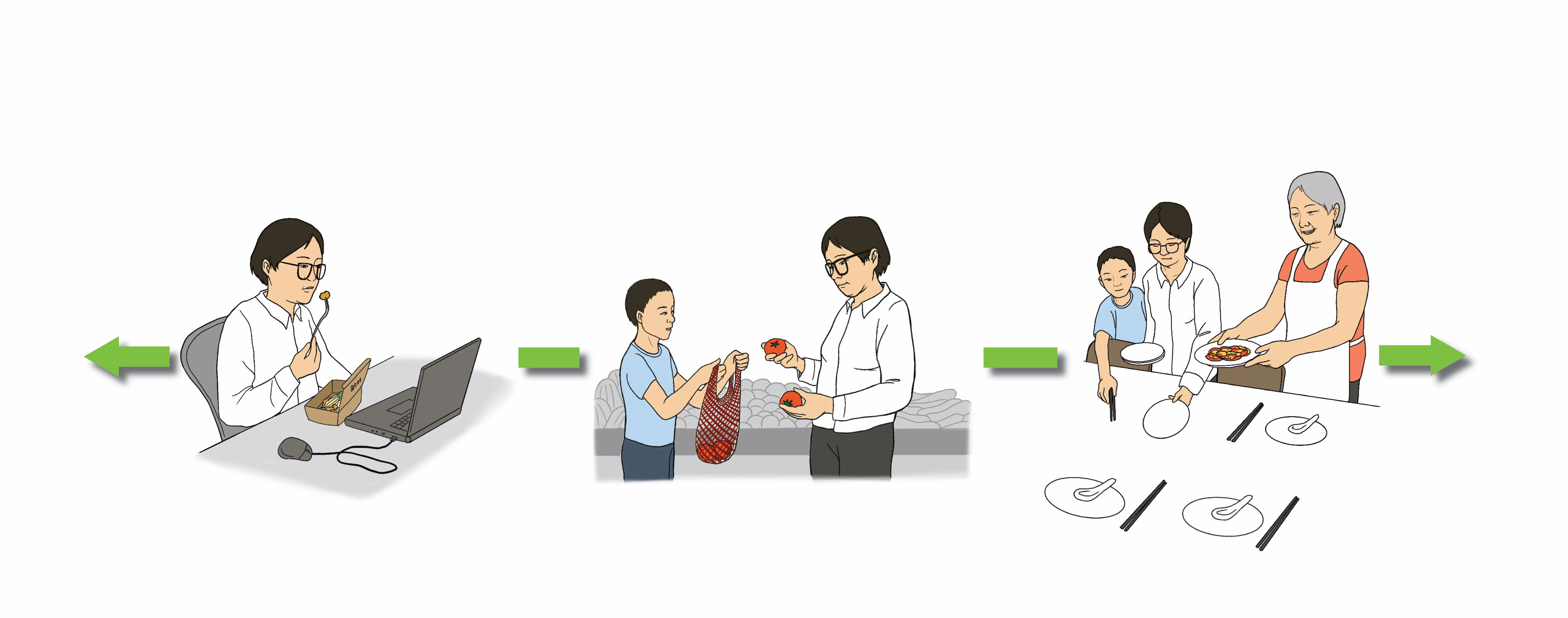Reflecting on Healthy Eating Along a Continuum
In addition to assessing the client, you need to assess and reflect on your own values and beliefs about healthy eating and food practices. Like all health professionals, you may hold assumptions about what constitutes “healthy” eating and may place value on certain foods. Eating is a very personal and intimate experience that is informed by a variety of factors, including societal norms, media, trends, culture, family, material resources, the environment, tastes, and memories. How one defines healthy eating is complex and as a health professional, you must be aware of your own assumptions when assisting clients and families to develop goals and outcomes for healthier eating patterns. When you are able to reflect on your own values and assumptions, it facilitates non-judgemental dialogue and demonstrates positive regard for the client’s overall well-being.
Historically, consumption of food has been medicalized, wherein certain foods have been categorically labelled as “good” or “bad”. This approach to food can perpetuate feelings of shame and silence when clients identify as consuming foods that have been labelled as “bad”. A more accepting and effective approach is to look at healthy eating along a continuum and collaborate with clients to garner a holistic view of their dietary intake and food practices. A holistic view removes a focus on merely what is problematic. Instead, the focus is to identify and emphasize existing healthy eating habits from which you can collaborate with the client to plan and implement nursing interventions. Healthy eating is not just about the physical nourishment of the body, but also encompasses the social and ethical components that inform a client’s decisions around healthy eating.
In evaluating client outcomes, Canada’s Food Guide 2019 also encourages cooking at home more, eating with others, and enjoying food, which you should take into consideration when exploring and determining success. Most importantly, you need to determine what success looks like according to the client. Evaluation should not be on merely whether the client has taken up eating as prescribed by the food guide. Rather, evaluation should focus on:
- Examining where the client lies on the healthy eating continuum as illustrated in Figure 3.2. For example, does the client eat take-out food while working? Are they involved in picking out healthy foods? Are they involved in preparing foods as a family?
- Assessing the strategies that worked and what needs to be modified to move further along the continuum.
- Evaluating or re-evaluating goals in collaboration with the client.

What are collectively defined as acceptable and un-acceptable ways of being informed by societal values and beliefs; these norms can be implicit or explicit.
A focus on physical and biological problems.

